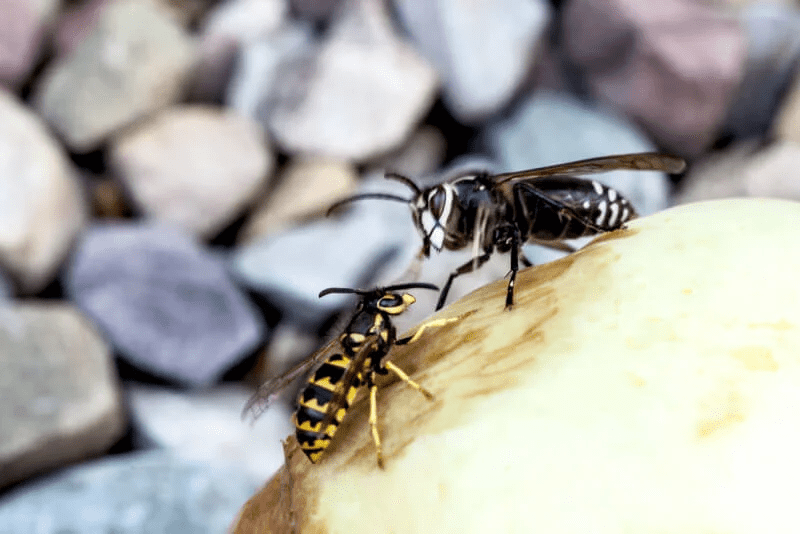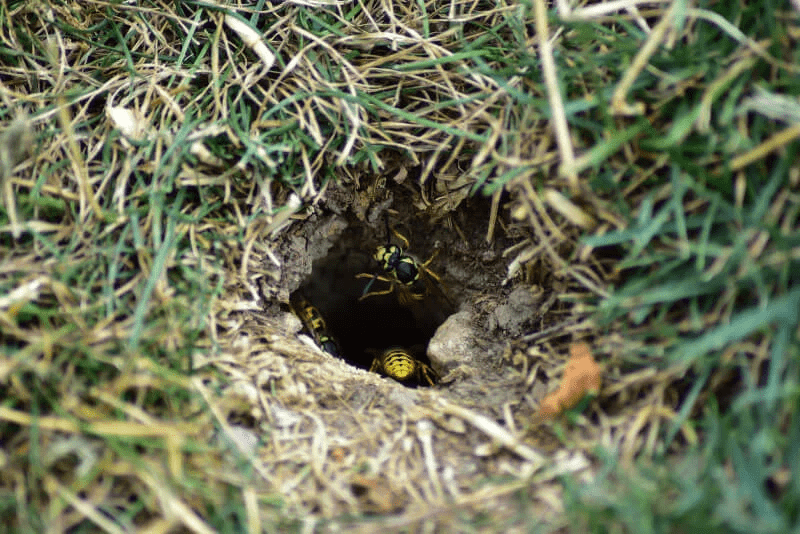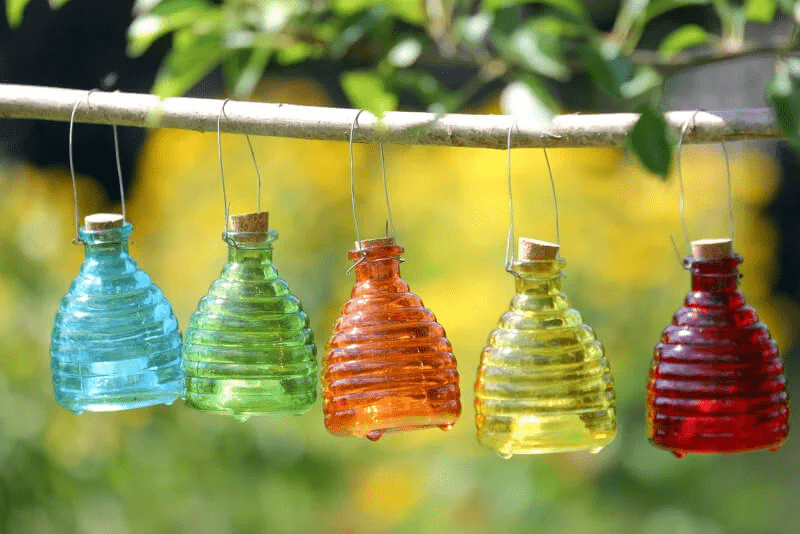
Hornets and yellowjackets both belong to the same category of wasp: social wasp. They produce colonies every year, with only the malted queen surviving winter. While they’re often confusing, these two insects do vary in a few ways.
What exactly are their differences, and how important is it to know them? These pests have differences in color, size, and location of their nests. Knowing these invaders’ entomology can go a long way toward ensuring the safety of your family and your peace of mind.
How to Differentiate Hornet vs. Yellow Jacket
Appearance
Often mistaken as a bee, yellow jackets are small, about a half-inch long, with yellow and black markings covering their entire bodies. On the other hand, hornets tend to be bigger, growing up to an inch, and are also distinguished by yellow markings. Unlike a yellow jacket’s markings, the markings on a hornet aren’t contrasted with black. Hornet coloring is diverse and has different ranges in the brown scale.
There are two main types of hornets in the United States. The European hornet is typically 1 to 1.5 inches long with a reddish-brown body, yellow rings around the back, and a yellow face. The bald faced hornet (dolichovespula maculata) is slightly smaller and has whitish circles around the eyes. There’s also another invader that has been reported in the country in 2019 — the Asian giant hornet species, also referred to as murder hornets. This giant hornet, native to Asia, is identifiable by its 2-inch size, cartoonish eyes on an orange head, and black-and-yellow-striped abdomen.
Behavior
One of the most common traits of yellow jackets is being aggressive scavengers. Aside from preying on small, soft-bodied insects, they’ll always forage on garbage cans and will harass anyone with a soda, juice, or meat. After scavenging, they’ll return to their nest with food, which they feed to adult and larval wasps.
Studies showed that foraging yellow jackets can invite other workers from their nest to a food source, even though they aren’t as good as bees are at recruiting nestmates. The recruits use odor as a clue to locate the food that other wasps are bringing back to the nest.
Like its close relative (the paper wasp) and its most common species, hornets feed on other insects and are less likely suspects for run-ins with humans as they’re less probable to show up at outdoor activities. These species don’t share the scavenging habits the yellow jacket has.
Nesting

The nests of yellow jackets and hornets aren’t the same. Hornet nests are unique. A wasp nest is thin, while the hornets’ nest is created like an upside-down teardrop. It also has a small nest entrance at the bottom where the hornets come in and out. Up to a thousand hornets can share the space in the biggest nest. Like honey bee nests and paper wasp nest, they’re usually tucked into secure locations like a tree or shrub, a crevice in a building, in a rotten tree stump, or guarded by the eaves of a house or shed.
Meanwhile, yellow jackets rarely nest above ground. A yellowjacket nest has a single opening that’s often hard to see because the nest is underground. Some species of yellowjackets, like the German yellowjacket, southern yellowjacket, and eastern yellow jacket, will construct ground nests in wall voids or exposed under eaves of houses. Their haunts of choice are confined spaces, usually underground, such as an abandoned rodent nest.
Stinging
Wasp stings are one of the simplest ways to identify which flying insect has stung you. Yellow jackets sting humans much more than hornets, mostly because their feeding habits bring them constantly closer contact with humans. But yellow jackets generally die after stinging a person because their stingers get caught in the skin. Hornet stings are often more severe, especially that of a baldfaced hornet, but less common. A hornet can also sting a person repeatedly because their stingers aren’t barbed.
The opposite of the social wasps is the solitary wasps like the mud dauber wasps, digger wasp, and cicada killer wasp, which aren’t aggressive and will rarely attack and sting, even if their nests are disturbed. These stinging wasps’ venom isn’t toxic to humans. Another flying insect that doesn’t attack humans is the solitary bee, which doesn’t have a store of honey to protect, so they’re non-aggressive.
Other bee species, however, can sting but aren’t overly aggressive. They only sting when provoked or when they sense their colony is threatened. When that occurs, they usually sting in large numbers. These species are the honeybee, bumble bee, carpenter bee, and mining bee.
How to Prevent Hornets and Yellow Jackets at Home

1. Remove potential lures
Eliminating anything these insect pests might be attracted to is your first step to prevention. Remove any inviting food sources and pick up fallen fruits. You also want to make sure that garbage cans are always tightly sealed to prevent yellow jackets from scavenging. Hornets feed on insects, so you also want to keep insects away.
2. Prevent nests from forming
Take a tour around your place and check for any areas that may need repair. Broken panels, spaces or gaps in soffits, and other cracks and crevices are perfect homes for a yellow jacket nest and hornet nest. Always ensure that windows, doors, and screens are all in working order so that no unwanted creature flies in. Rodent holes and burrows are also potential nest sites, so fill these with dirt or soil if unoccupied.
3. Place wasp-repelling plants around your home
One way to repel hornets and yellowjackets near your home is to plant wasp-repelling plants like thyme, spearmint, wormwood, citronella, and eucalyptus. Plant these near your home and especially where you have seen any stinging insect before. Flowering plants like pennyroyals, marigolds, and geraniums can also deter hornets and yellowjackets.
4. Use decoys
You can purchase a decorative decoy from a garden or home improvement store. Hornets and yellowjackets are territorial wasp species and tend not to build an aerial nest or ground nest within 200 feet of another nest, so a few decoys on either side of the home should stop any from moving in. Setting in decoy nests can work with bees as well. If you prefer to make your own, take old newspapers, crease them into balls, pack them into plastic bags, and tie them closed. Then place them in lunch-size paper bags. After this, hang them up in corners of your home and around your yard.
5. Use wasp traps
You can buy one, but you can also opt for a DIY wasp trap by mixing common household ingredients. This can be a cheap and efficient way to eliminate wasps. Vinegar, for instance, can be used to create a water trap. Once the wasps enter the water, they won’t be able to get out and will drown. The entire water trap requires sweetened water and apple cider vinegar. You can also use the same solution to get rid of fruit flies. Alternatively, white vinegar mixed with equal parts of water can be poured into a spray bottle and sprayed to keep the wasps away.
6. Make a soap and water solution
A soap and water solution makes a great defense against small wasp nests. You need to get a spray bottle, add two tablespoons of dish soap, and fill the rest of the bottle with water. Shake the mixture well, then liberally spray it on the stinging insect nest. This will clog up their breathing pores, causing them to die immediately.
7. Blend essential oils
Essential oils are known to be effective hornet and yellow jacket repellants. Mix a few drops of clove, geranium, and lemongrass essential oils if you prefer to deter these pests naturally. You can mix this essential oil blend into a bottle along with a few tablespoons of dish soap. Apply this solution on wasp nests. Be sure to also look under eaves, porch roofs, and any other ledges. You can spray this mixture in any spots you’ve seen nests in the past as well.
Go for a Safe and Cost-Effective Solution Against Pests
Due to the hazard involved in dealing with colonies of hornets and yellowjackets, only a pest control expert should accept that risk. Trust only Midway Pest Management to exterminate these pests from your home. We guarantee that only the most effective and safest pest control methods will be used to eliminate and prevent these invaders from re-establishing nests. Reach us and schedule a free inspection.
Learn more: How to Get Rid of Hornets